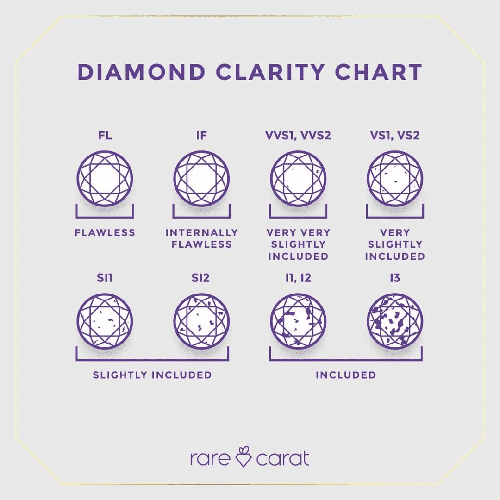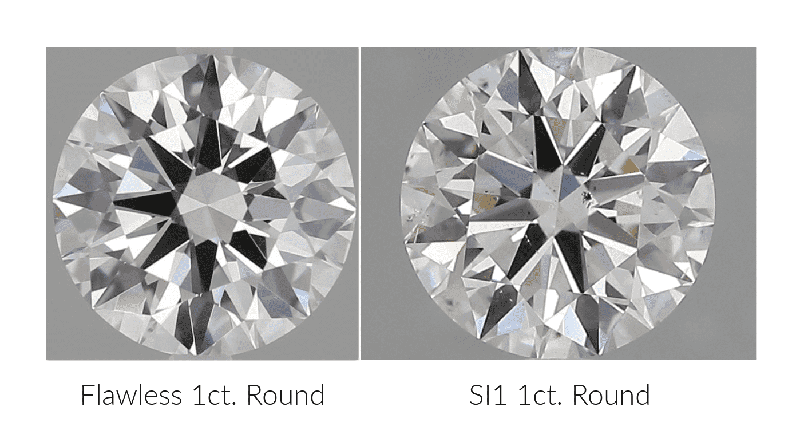Have you ever heard the expression “Mother Nature cooks in a dirty kitchen?” It is a common misunderstanding that, although the earth is a messy place, diamonds are pure gemstones made of unadulterated carbon. While it is true that many of the diamonds we see in jewelry feature a glassy cleanness (an attribute called “eye-clean”), some will have “eye-visible” impurities that are perceptible without magnification. It is actually quite rare to find diamonds that are truly pure internally. As rarity drives up market value, the fewer inclusions (impurities) that a diamond has, the more costly that stone is likely to be. This is why a diamond’s clarity is important enough to be one of the four C’s that contribute to the overall value of a stone alongside Carat, Color, and Cut.
Clarity Described
To assist in the consistent description of Clarity, the GIA created a universal classification system in 1953 which allowed for diamonds to be sorted into one of eleven different grades with Flawless being the highest grade and Included 3 (I3) being the lowest.

Determining Eye-Clean vs. Visibly Included
In my experience, the simplest way to approach this chart to decide which grade is best for you is to first split it between the VS and the SI grades. This all has to do with that concept of a stone being “eye-clean.” It is rare to have a stone in the VS range that has an inclusion that can be seen without magnification, and even if it does, that inclusion will be VERY hard to find. This means that almost all stones with grades between Flawless and VS2 are going to look “eye-clean.”
Conversely, diamonds that are SI1 to I1 will have increasingly noticeable “eye-visible” features and will be less costly. When looking to buy stones in this range, take a minute to understand where, how big, and what color the inclusions are. Features that are positioned closer to the outer edges of the stone (called the girdle), will be harder to see than those that sit directly in the center of the stone. Also, dark inclusions tend to show more than lighter ones. Typically, you will not find I2 or I3 in jewelry stores because their inclusions are so severe that the diamond is not attractive and would be too fragile for use.

So, if you have decided that you want a stone that is eye-clean and don’t really care about what you can’t see, you can save a lot of money by buying a VS stone rather than one with a higher grade. Maybe finding a sizable diamond is your priority and you don’t mind a few small inclusions. In this case, go for an SI stone. Perhaps you are looking to make a financial investment in a spectacular diamond with the best and rarest qualities – in this case, Flawless, Internally Flawless and VVS grades are your best bet!

